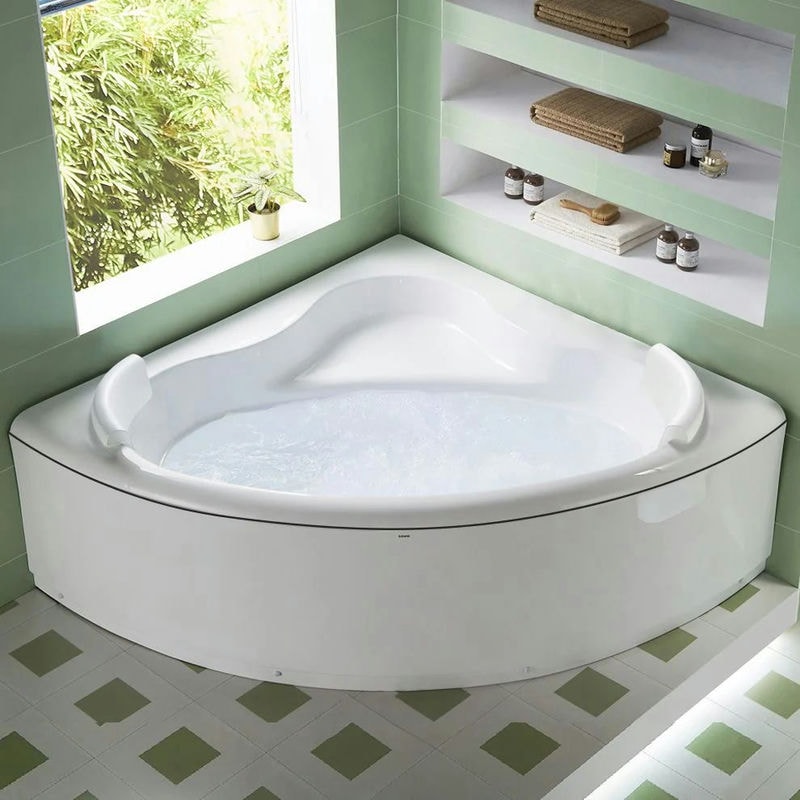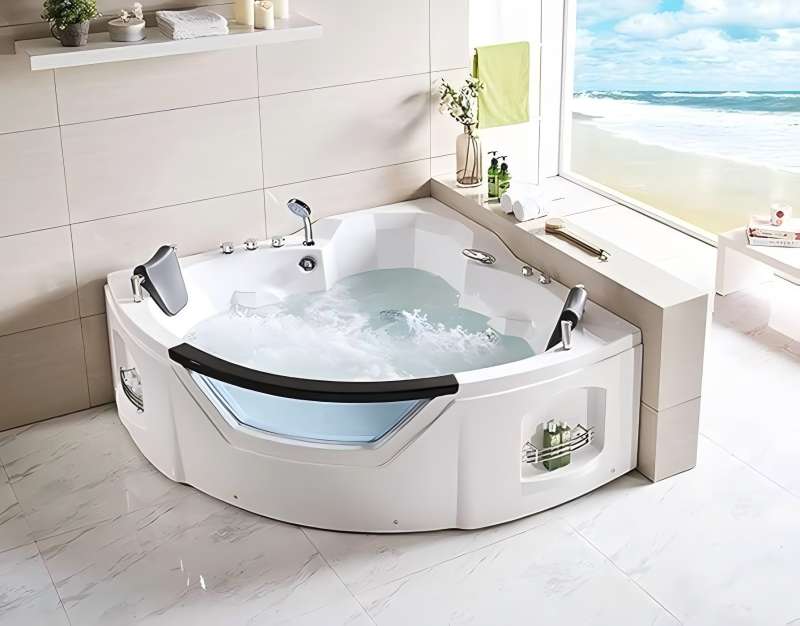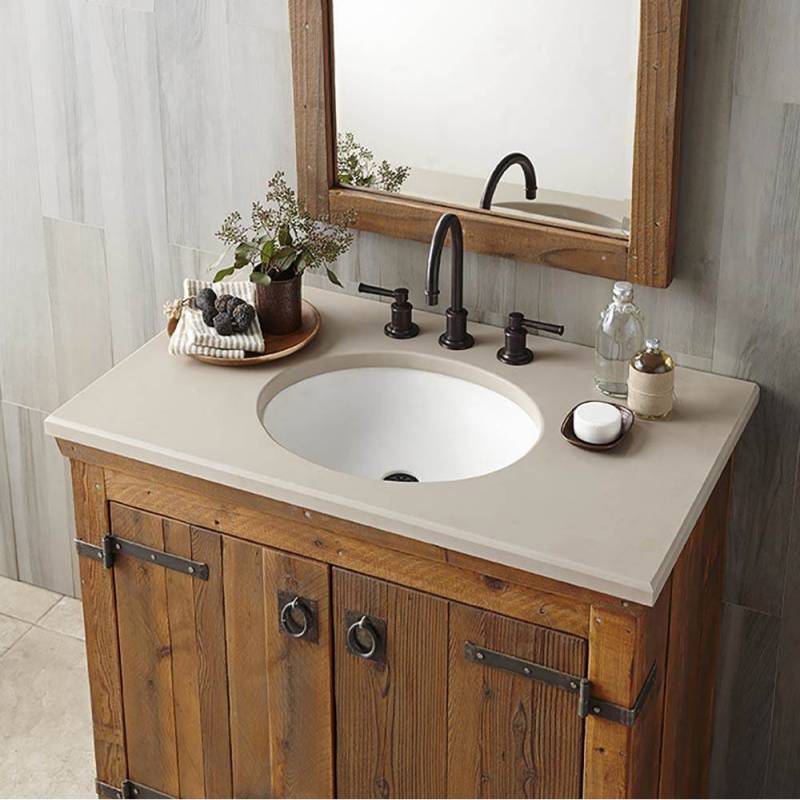 English
English
Jabra Sanitary is a sanitaryware supplier offering toilets, sinks, faucets, bathtubs, etc., at competitive prices. If you're a distributor, wholesaler, or project contractor, get a quote today!
 $23.9 Limited-time Offer
$23.9 Limited-time Offer Consignment Policy
Consignment Policy 20 Years of Experience
20 Years of Experience
Choosing the right bathtub size is crucial for both comfort and functionality in your bathroom. Whether planning a full-scale remodel or simply replacing your old tub, understanding standard bathtub sizes and how they fit into your space is essential.
This guide will help you explore common bathtub sizes available by tub type, and how to measure your space accurately to avoid costly mistakes.

Table of Contents
What Is the Standard Size of a Bathtub?
Standard Dimensions of Bathtubs
Typical Bathtub Sizes Chart by Type
How Does Bathtub Size Impact Remodel Costs?
How to Choose the Best Bathtub Size
How to Measure a Bathtub for Replacement
Frequently Asked Questions
Final Thoughts
What size is a standard tub? Here are common bathtub dimensions by tub type. Note that some may exceed bathtub measurement standards.
- Length: 30 to 32 inches
- Width: 30 to 32 inches
- Depth: 14 to 16 inches
What is the length of a standard tub?
The standard bathtub length typically ranges from 60 to 72 inches. This size of an average bathtub is ideal for most bathrooms, providing enough space for comfortable bathing without overwhelming the room.
The 60-inch bathtub is the most common tub size, especially in smaller bathrooms, offering a practical balance between comfort and space efficiency.
What is the width of a standard tub?
A standard bathtub is usually about 30 to 32 inches wide. This width provides enough space for a comfortable bath while fitting well in most bathroom layouts.
Wider tubs or large bathroom tubs, ranging from 36 to 40 inches, are available for those who prefer more room to relax or for larger bathrooms where space is less of a concern.
What is the standard height of a bathtub?
Standard bathtubs have a depth of about 14 to 16 inches, which is sufficient for a typical bath. However, for those who enjoy soaking, deeper tubs ranging from 18 to 22 inches are available.
These deeper tubs allow for a more immersive experience, making them a popular choice for those who prioritize relaxation.
What Is the Typical Tub Dimensions for a Two-Person Bathtub?
For a two-person bathtub, you'll want a tub that is at least 60 inches long and 32 inches wide, though larger sizes up to 72 inches in length and 36 inches in width are more comfortable.
Two-person tubs are often deeper as well, with depths ranging from 18 to 24 inches to accommodate both bathers comfortably.
Small Alcove Bathroom Tub Sizes
Small alcove bathtubs are designed for compact spaces, with bathroom tub sizes typically 54 inches in length, 30 inches in width, and 15 inches in depth. These small bathtubs are perfect for small bathrooms where space is limited but a standard tub is still desired.

Alcove Bathtub Sizes
The standard alcove bathtub sizes about 60 inches in length, 32 inches in width, and 18 inches in depth. Alcove tubs are the most common type of bathtub, offering a balance between comfort and space efficiency, making them a popular choice in many homes.

Soaking Bathroom Tub Dimensions
Soaking tubs are deeper than standard tubs, with typical bathroom tub dimensions of 60 to 72 inches in length, 32 inches in width, and a depth of 20 to 24 inches. These small bathroom soaking tubs are designed for relaxation, allowing for a more immersive bath experience.

Average Dimensions Of Drop-In Bathtub
Drop-in bathtubs are installed in a pre-built deck or platform, with average dimensions of bathtub sizes ranging from 60 to 70 inches in length, 30 to 32 inches in width, and 18 to 20 inches in depth. These tubs offer a sleek, built-in look and are often used in larger bathrooms.

Standard Dimensions for Corner Bathtub
Corner bathtubs are designed to fit into a corner of the bathroom, making them a space-saving option. The standard dimensions for these compact bathtubs are 60 inches long on each side, with a depth of 18 to 22 inches, providing ample space for a relaxing soak while maximizing bathroom space.

Freestanding Bathtub Size
Freestanding bathtubs are standalone fixtures that can be placed anywhere in the bathroom. Typical freestanding bathtub size range from 55 to 72 inches in length and 27 to 32 inches in width. These tubs are often deeper than standard tubs, with depths of 20 to 24 inches, making them a luxurious option for larger bathrooms.

Oval Bathtub Size
Oval bathtubs offer a unique, modern look with shower tub dimensions typically around 60 to 72 inches in length, 30 to 36 inches in width, and 18 to 22 inches in depth. These tubs are a stylish choice, providing a comfortable and spacious bathing experience.

Whirlpool Bathtub Dimensions
Whirlpool bathtubs, known for their jets that provide a massaging effect. The standard size whirlpool bathtub usually measure 60 to 72 inches in length, 32 to 36 inches in width, and 18 to 24 inches in depth. These tubs are a popular choice for those seeking a therapeutic bath experience.

Long Bathtub Size
Long bathtubs are ideal for taller individuals or those who simply prefer more space. These average bathtub sizes range from 66 to 72 inches in length, with widths of 30 to 36 inches and depths of 18 to 22 inches, offering ample room for a comfortable, full-body soak.

Typical Bathtub Sizes Chart by Type
The following chart provides an overview of the standard bathtub length, width, and bathtub height or depth for each type of bathtub, helping you easily compare sizes:
Bathtub Type |
Length (inches) |
Width (inches) |
Depth (inches) |
|---|---|---|---|
Small Alcove Bathtub |
54 |
30 |
15 |
Alcove Bathtub |
60 |
32 |
18 |
Soaking Tub |
60-72 |
32 |
20-24 |
Drop-In Bathtub |
60-70 |
30-32 |
18-20 |
Corner Bathtub |
60 |
60 |
18-22 |
Freestanding Bathtub |
55-72 |
27-32 |
20-24 |
Oval Bathtub |
60-72 |
30-36 |
18-22 |
Whirlpool Bathtub |
60-72 |
32-36 |
18-24 |
Long Bathtub |
66-72 |
30-36 |
18-22 |
How Does Bathtub Size Impact Remodel Costs?
Material Costs
The size of your bathtub directly influences the cost of materials. Larger tubs require more materials, whether it's for the tub itself or the surrounding tiling and fixtures.
For example, a small alcove tub may be less expensive than a large freestanding or whirlpool tub, not just because of the bathtub size but also because of the materials used. High-end materials like cast iron or natural stone will further increase the cost.
Installation Costs
Larger bathtubs often come with higher installation costs due to the complexity of fitting them into your bathroom. Freestanding and drop-in tubs may require more extensive plumbing work or structural modifications to your bathroom floor to support the added weight.
Additionally, the labor required to install a larger tub can be more intensive, leading to higher installation fees.
Additional Plumbing Costs
Depending on the size and type of tub you choose, you may also need to upgrade your plumbing system. Larger tubs, especially whirlpool or soaking tubs, often require more water, which might mean upgrading your water heater or installing additional plumbing lines. These changes can add significantly to your remodeling costs.
How to Choose the Best Bathtub Size
Consider Your Bathroom Space
Your bathroom's size is the first factor to consider when choosing a bathtub. Measure your space carefully to ensure the tub you choose will fit comfortably.
A larger tub in a small bathroom can make the space feel cramped, while a small tub in a large bathroom might look out of place. Balancing the size of the tub with the size of the bathroom is key to a harmonious design.

Think About Usage Needs
Consider how the bathtub will be used. If you have a family with young children, a standard alcove tub may be the best choice for practical reasons.
However, if you're looking for a spa-like experience, a larger soaking or whirlpool tub might be more appropriate. For couples, a two-person tub could be a luxurious option that adds a romantic element to your bathroom.
Factor in the Style of the Bathtub
The style of the bathtub should complement your bathroom's overall design. Freestanding tubs make a bold statement and work well in larger bathrooms, while alcove and drop-in tubs offer a more seamless look for smaller spaces.
The style you choose will also affect the size, as some types of tubs, like freestanding or corner tubs, tend to be larger and require more space.
Budget Considerations
Your budget will play a significant role in determining the size of the bathtub you choose. Larger tubs and those made from premium materials will generally cost more.
It's important to balance your desires with your budget, keeping in mind the total cost, including materials, installation, and any necessary plumbing upgrades. Remember that a well-chosen bathtub is an investment that can add value to your home.
 Ads
Ads
Large Deep Soaking Bathtub
The large soaking tub features an ergonomic backrest with a curved design, ensuring a relaxing and supportive soak that aligns perfectly with your body's natural contours.
How to Measure a Bathtub for Replacement
Here's how do you measure a bathtub, following these steps.
Step 1: Measure the Length of Your Bathroom
Start by measuring the length of the area where you plan to install the bathtub. This will help you determine the maximum bathtub length you can accommodate. Make sure to account for any door swings, cabinets, or other fixtures that might interfere with the tub's placement.
Step 2: Measure the Width of Your Bathroom
Next, measure the width of the installation area. This measurements will help you determine the bathtub width that will fit comfortably in the space. Keep in mind that you should leave some space around the tub for easy access and cleaning.
Step 3: Consider the Bathtub Height
The bathtub height is another important thing to consider, especially if you have limited vertical space or if there are windows or shelving above the installation area. The height of tub will also affect how comfortable the tub is to use, particularly for soaking tubs where a greater depth is desired.

Step 4: Account for Additional Space Around the Tub
Finally, ensure that there is enough space around the tub for any additional features, such as a showerhead, faucets, or storage shelves.
You should also consider the space needed for stepping in and out of the tub safely. Proper planning of the surrounding area will enhance both the functionality and safety of your bathtub.
Frequently Asked Questions
Are Small Baths Any Good?
Small baths can be a great option for bathrooms with limited space. They provide all the essential features of a full-size tub but in a more compact form.
While they may not offer the same level of comfort as larger tubs, small baths are practical, efficient, and can be quite stylish, making them a popular choice for smaller homes and apartments.
What Is the Best Type of Tub for a Tall Person?
For taller individuals, a long bathtub, such as a soaking tub or a freestanding tub, is ideal. These tubs typically range from 66 to 72 inches in length, allowing taller users to stretch out comfortably.
Consider choosing a tub with a deeper design as well, as this provides more space for full immersion.
What Is the Best Type of Tub for a Large Bathroom?
A large bathroom offers more flexibility in bathtub choice. Freestanding tubs, whirlpool tubs, and large soaking tubs are excellent options, as they can serve as the centerpiece of the room.
These large bathroom tubs not only fill the space effectively but also add a touch of luxury to your bathroom design.
How Much Room Do You Need for a Bathtub?
The space required for a bathtub depends on its size and type. A standard alcove tub typically requires at least 60 inches in length and 32 inches in width.
For larger tubs, such as freestanding or corner tubs, you may need additional space to accommodate their dimensions and ensure they fit comfortably within your bathroom layout.
How Much Space Should I Have in Front of My Tub?
It's recommended to have at least 30 inches of clear space in front of your bathtub. This allows for easy access and movement around the tub.
If you have a larger bathroom, you might consider leaving more space to enhance the overall comfort and functionality of the room.
Final Thoughts
Choosing the right bathtub size from a bathtub company involves balancing your needs with the space available in your bathroom. Understanding the standard bathtub dimensions and types of bathtubs, along with how to measure your space, is crucial to making an informed decision.
Whether you prefer a compact alcove tub or a luxurious freestanding bathtub, selecting the right size of bathtub will enhance your bathing experience and complement your bathroom's design.
By following this guide, you'll be well-equipped to choose the perfect bathtub size for your home.























